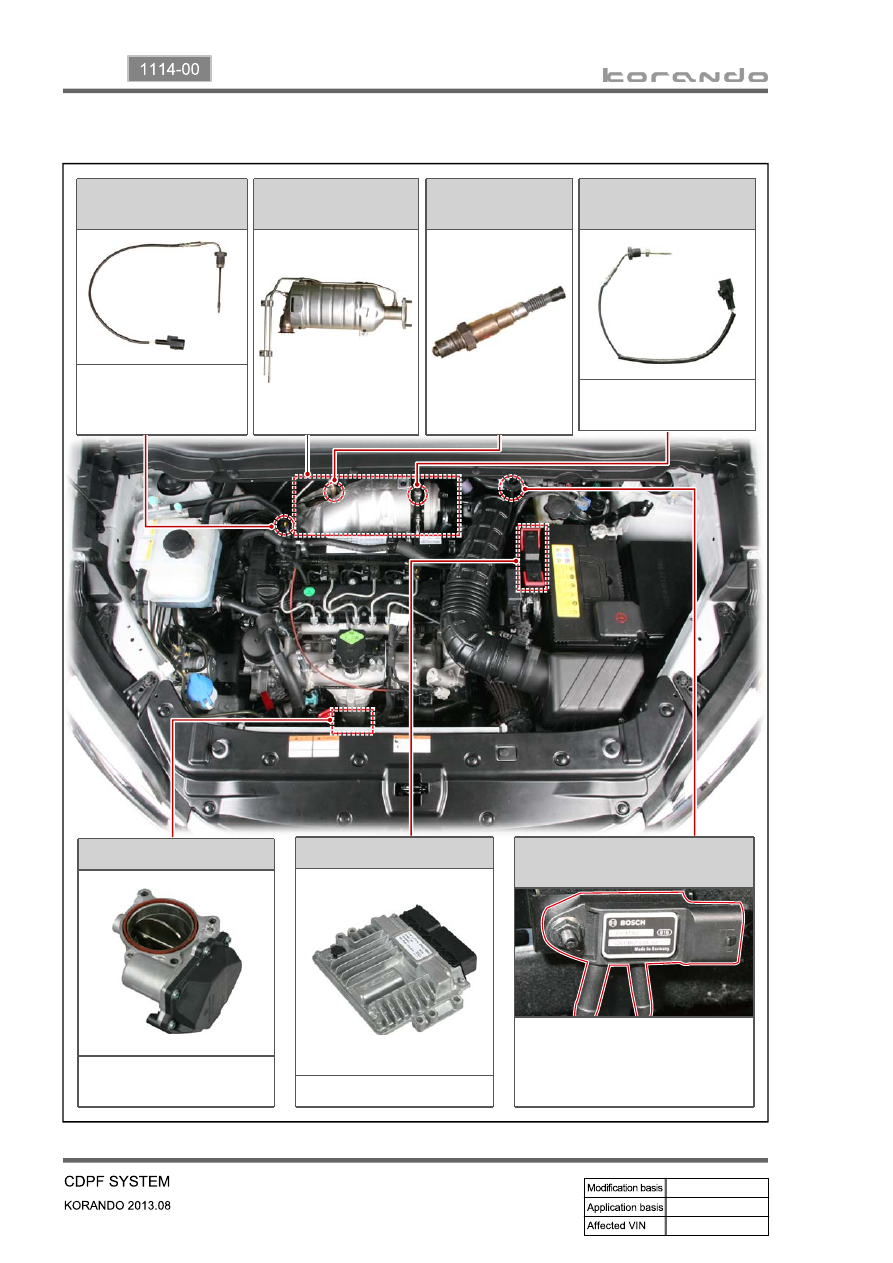SsangYong Korando III (2010 year). Manual - part 362

14-8
Engine ECU (D20DTF)
Post-injection
Differential pressure sensor
Calculates the amount of PM
collected by reading the pressure
difference between before and
after the CDPF.
Electric throttle body
Regulates the rate of air
intake.
CDPF
(DOC + DPF)
Front temperature
sensor
Protects the
turbocharger.
Rear temperature
sensor
Measures the
temperature of fuel
combustion.
2. COMPONENT
Oxygen
sensor